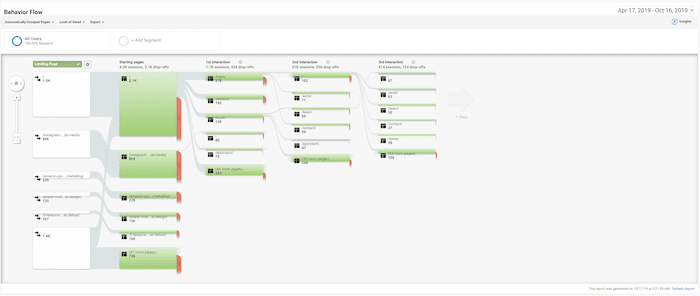Before diving headfirst into a website redesign, it’s important to take a step back and look at your current website critically. Find out what’s working for your website’s visitors – and what’s not.
User behavior is always at the core of our website redesign strategy. Why? To guide your website visitors toward a purchase, we need to think about how they behave, interact and make decisions online. Getting to know your target market helps us design your website in a way that makes sense for your business and its potential customers.
Here are three ways we get to know your potential customers before designing your new website.
Landing Page Analysis
Landing pages, which is what we call the first page a website visitor “lands” on, are a potential customers’ first impression. Looking at the Landing Page report in Google Analytics helps us understand which entry pages are most popular, as well as which ones lead to conversions. To see this data for yourself, navigate to the Landing Pages report by clicking on Behavior > Site Content > Landing Pages in Google Analytics.
The Behavior Flow report allows us to see how people are navigating through your website. Do they find what they need on the first try? Do they spend a lot of time browsing content? Are they making it to your most important pages? Review your website’s Google Analytics Behavior Flow report by navigating to Behavior > Behavior Flow.

Keyword Research
A website redesign calls for an evaluation of your traffic-driving keywords. Using Google Search Console, we identify what keywords searchers use to find your website. Your new website’s copy and page design should emphasize these keywords. We also include related phrases discovered through additional keyword research.
Intuitive Navigation
Intuitive navigation is a huge part of any website’s user experience. Your users should be able to navigate seamlessly from page to page to find exactly what they’re looking for. Using tools like Google Analytics and Hotjar, we get a feel for your website visitors’ on-site behavior.
Our designers dive into existing heatmaps, scrolling patterns, CTA clicks, misclicks and Behavior Flows. Then, we use those insights to build a better user experience into your new website. We also incorporate current best practices, including responsive design, which allows your customers to easily make their way around, whether they’re on a desktop computer or mobile device.